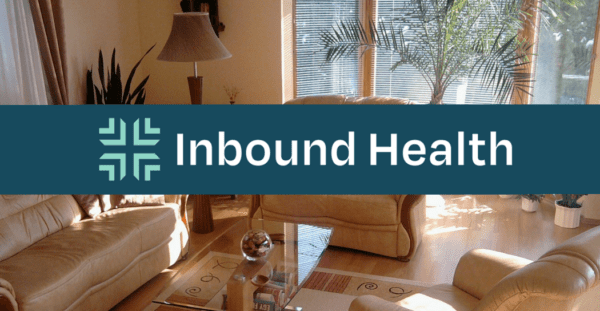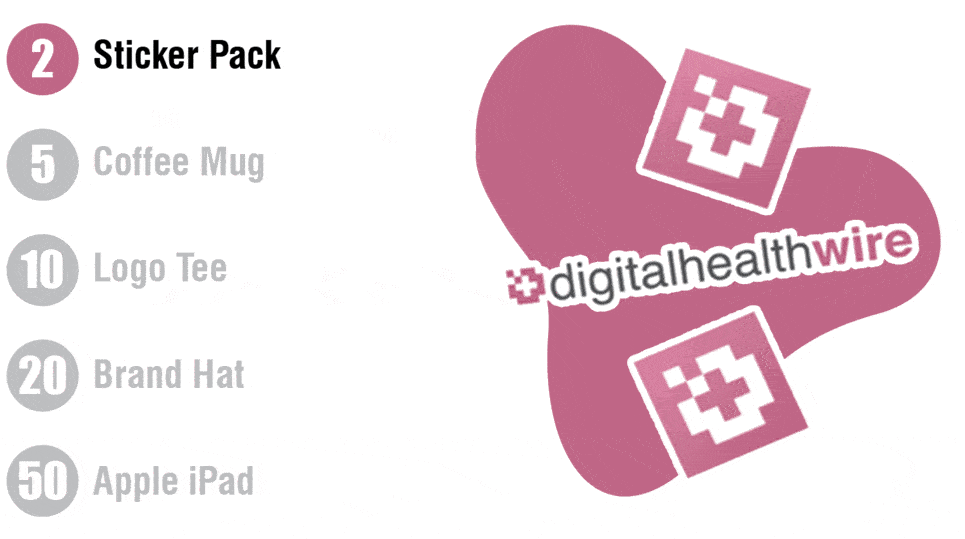|
Inbound Health | Calm Health Launch
October 20, 2022
|
|
|

|
|
Together with
|

|
|
|
“In order to change healthcare you have to sort of imagine yourself as a building inspector and think, ‘If I take down that wall is the entire building going to fall apart, or is it there for stupid reason and I should take it down.’ It’s really hard to have that intuition if you’re on the outside.”
|
|
Inbound Health CEO David Kerwar
|
|

|
|
Providing patients with at-home care is one thing, but determining which patients would benefit from it is a whole different story. Inbound Health is emerging from stealth to connect the dots.
Equipped with $20M in launch funding, Inbound is spinning out of Minnesota-based Allina Health and Flare Capital Partners to help other health systems establish their own hospital-at-home and skilled nursing-at-home programs.
The first half of Inbound’s platform covers all the bases of a robust at-home care program, including virtual care teams, in-person nursing visits, remote patient monitoring, engagement tech, and a command center to keep it all straight.
- To help identify patients that would benefit from the program, Inbound provides AI-enabled analytics to filter candidates both medically and functionally in their home life, then confirms the fit with their physicians.
- To help get those pieces in place, Inbound steps in with operational oversight, a comprehensive supply chain, and of course: performance-based contracts.
The overall partnership structure is flexible, allowing health systems to leverage their existing capabilities while only relying on Inbound to bridge the gaps necessary to scale these programs across their service areas.
- Since beginning as a temporary program at the start of the pandemic, Inbound has now served over 4k patients across 185 primary diagnoses, reportedly lowering the total cost of care by 30%+ while often achieving better clinical outcomes than facility-based care.
- While other home care enablers like Medically Home and Contessa Health are pursuing similar strategies, Inbound aims to set itself apart with “full stack of capabilities” that benefit outcomes enough to develop unique episodic-based payor contracts.
The Takeaway
At-home care is undoubtedly a hot corner of the market, attracting plenty of attention with its promise of lowering costs while increasing patient satisfaction. By bringing everything under one roof and tying its own success to its partners’ success, Inbound seems like it’s on the right path to making that promise a reality.
|




|
|
Hyperfine Brings MRI to the ICU
“It completely changes the way we think about MRI imaging.” Take a look at this video interview with Mass General’s Chief of Neurocritical Care to see how clinicians can use Hyperfine’s Swoop Portable MRI to eliminate care disruptions in the ICU by keeping critically ill patients in the unit throughout the neuroimaging process.
|
|
Medication Success Starts Here
Medication Success starts with a smarter prescription. Find out how the Synapse Platform powers point-of-care solutions that provide the patient-centered insights necessary for successful therapies.
|
|
- Calm Health Launch: Calm apparently isn’t content with being the most popular meditation app of all time, and is now launching Calm Health, a suite of condition-specific mental health programs targeted at payors and providers. Calm Health builds on tech gained through the acquisition of Ripple that’s designed to make it easier for users to communicate with caregivers and track their medications. The new service replaces Calm for Business, which had over 2k partners and covered more than 20M lives.
- Compensation Gender Gap: Medscape’s latest Female Physician Compensation Report revealed that 52% of female physicians feel unfairly compensated compared to their male counterparts, although a positive takeaway showed that the gender gap may be narrowing (n = 13k physicians). That said, the report found that 2022 compensation climbed 8.1% for female PCPs (avg. salary $228k) and 8.5% for female specialists ($307k), so there’s still a long way to go before reaching parity with male PCPs ($285k) and specialists ($402k).
- Apple Health Coverage: Apple could start offering health coverage in 2024 as it looks to take advantage of Apple Watch-generated data, at least according to analysts at CCS Insight. Apple already collects data including blood pressure, blood oxygen, ECGs, as well as temperature and medication information introduced with the Watch Series 7. This data, combined with the deepest pockets in the business, could give an Apple health plan a huge advantage if launched in partnership with a major payor.
- AFib Detection Struggles: On a less rosy note for the Apple Watch, a new study in the Canadian Journal of Cardiology found that the wearable’s ability to detect atrial fibrillation is significantly impacted by underlying ECG abnormalities. The authors tested the Apple Watch ECG’s ability to detect AFib in 734 patients (154 with AFib), finding that the watch failed to produce an automatic diagnosis in 20% of AFib patients, with a large percentage of the failures due to either underlying bradycardia (34%) or tachycardia (6%).
- Artera Rebrand: WELL Health underwent a top-to-bottom rebrand, including a new name, Artera, accompanied by a fresh logo that gives a wink to the “artery” wordplay and the company’s goal of keeping patient communications “at the heart of healthcare.” The branding overhaul was tied to an announcement that Artera’s platform is now offered in 100+ languages, helping it unify disjointed communications into a single channel to support healthier patients and a more efficient staff.
- Digitizing Patient Consent: German researchers highlighted the benefits of a digitized informed patient consent solution (D-IPC) for CT exams. The study offered D-IPCs to 2,016 patients before contrast-enhanced CT exams, finding that D-IPCs were significantly more likely to detect risk factors for adverse events (contrast allergies, claustrophobia) than conventional paper-based methods (23.6% vs. 2.5%). The 84% of patients who successfully completed the D-IPC had 8.7% higher operational costs, but the authors conclude that D-IPC’s safety benefits make them worthwhile.
- DiMe Physical Activity Measure: DiMe is kicking off a new initiative to align on a Physical Activity measure that can be used as a shared baseline across any therapeutic area, working alongside a stacked partner roster that includes Verily, Evidation, and the Michael J Fox Foundation. There are over 80 physical activity endpoints in DiMe’s Library of Digital Endpoints, but DiMe is setting out to establish a core set of widely applicable measures to help improve data-based decision making for everyone from patients to regulators.
- Ochsner RPM Pilot Program: Ochsner Health released promising findings from its Medicaid patient remote patient monitoring pilot that equips participants with digital BP cuffs and glucose monitor, then provides virtual follow-ups when abnormal readings are detected. Ochsner showed that 50% of hypertensive patients and 59% of type 2 diabetes patients reached their control goals in the first few months of participation, and the health system now plans to expand the program beyond Louisiana through partnerships with employers and payors.
- NeuroFlow Closes $25M: NeuroFlow closed $25M in growth funding to scale its platform that aims to integrate behavioral health into all aspects of healthcare. The company’s platform allows providers to deliver behavioral health assessments to detect conditions such as anxiety and depression, but it hopes to set itself apart from similar startups by combining AI-enabled patient engagement with point-of-care CDS tools that make it easy to update care plans based on measurable progress.
- At-Home Testing Stats: A University of Michigan study found that 48% of adults ages 50-80 have used at least one kind of at-home health test, while 82% are interested in taking one in the future. Unsurprisingly, the poll of 2,163 older adults revealed that COVID tests were the most commonly used (32%), although 17% have performed an at-home DNA test and 6% have used a screening test for cancer.
|
|
The New Staffing Landscape With connectRN
Flexibility is a key component of enabling nurses to deliver their best care without getting burned out. In this Digital Health Wire Q&A, we sat down with connectRN CEO Ted Jeanloz to discuss technology’s role in solving healthcare’s staffing challenges and the new ways that human-centered design can help support nurses.
|
|
3 Ways to Ease the Pain of Provider Credentialing
Is provider credentialing adding cost and time to your bottom line? Check out Medallion’s new blog for three ways to ease the pain of provider credentialing so that you can focus on delivering quality care.
|
|
Creating an Exceptional Engagement Experience
With a surge in experience‑oriented disruptors entering the healthcare industry, patient engagement is becoming a crucial competitive differentiator. Get your copy of Nuance’s guide to delivering intelligent interactions and a better experience at every touchpoint.
|
|
|
Share Digital Health Wire
|
|
Spread the news & help us grow ⚡
|
|
Refer colleagues with your unique link and earn rewards.
|

|
|
|
|
Or copy and share your custom referral link: *|SHAREURL|*
|
|
You currently have *|REFERRALS|* referrals.
|
|
|
|
|